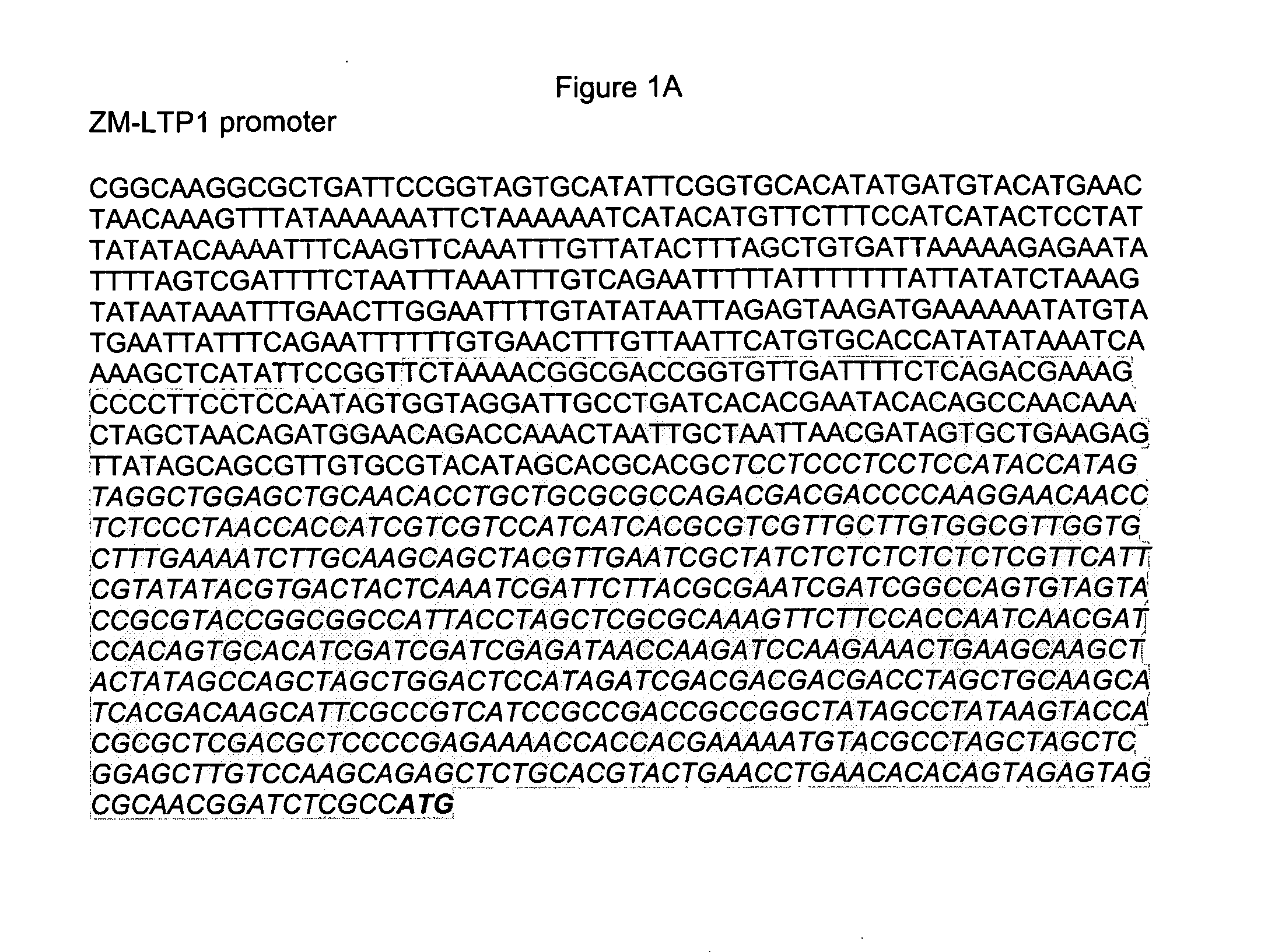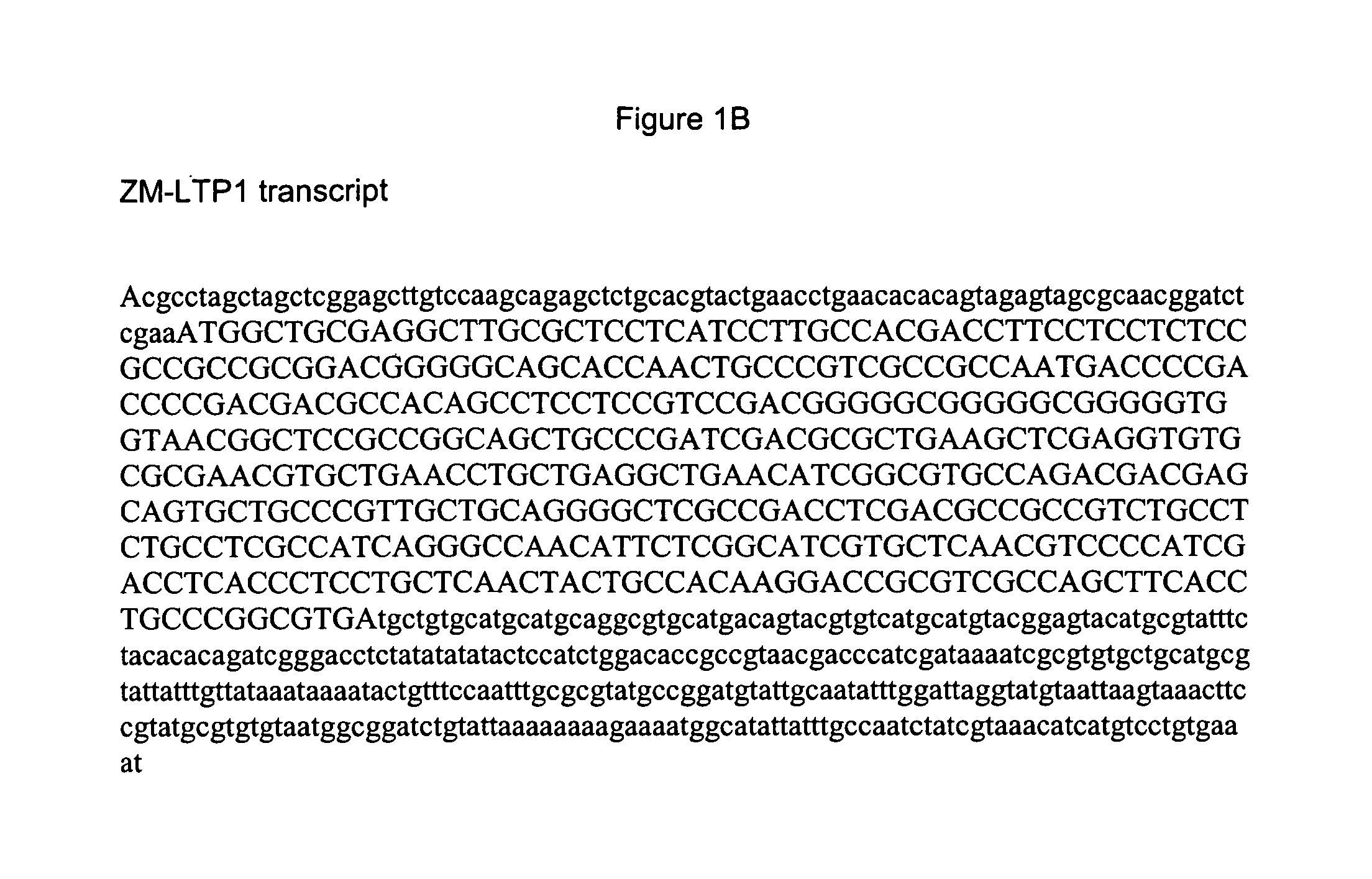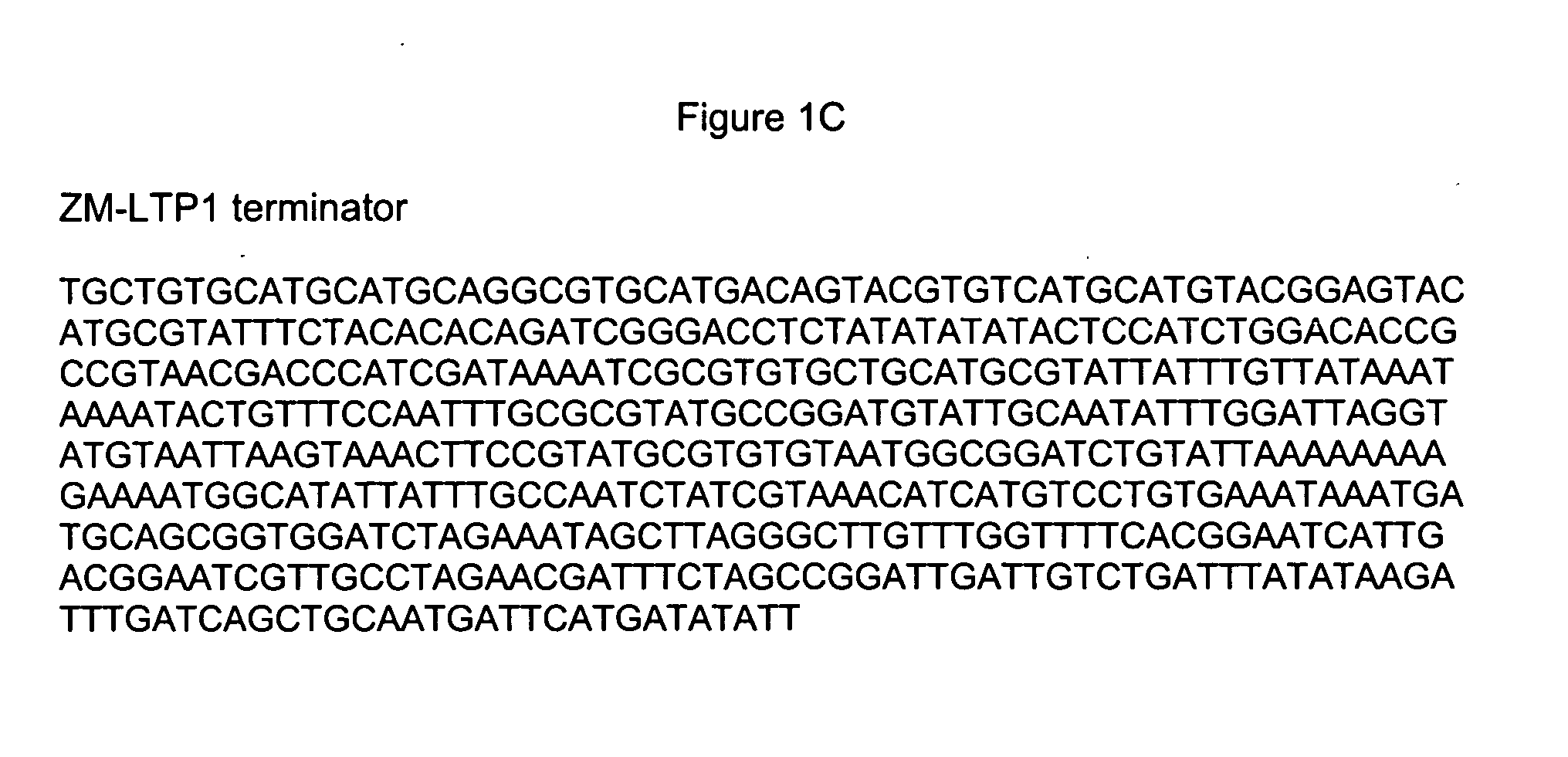Pericarp-preferred regulatory element
- Summary
- Abstract
- Description
- Claims
- Application Information
AI Technical Summary
Benefits of technology
Problems solved by technology
Method used
Image
Examples
example 1
Prediction of Expression Via Lynx MPSS
[0122] Lynx™ gene expression profiling technology was used to identify the maize ZM-LTP1 coding region as a candidate for promoter isolation. Massively parallel signature sequencing (MPSS, see Brenner et al, Nature Biotechnology 18:630-634, 2000) indicated expression in various genotypes at about 10 DAP (days after pollination) in pericarp, peaking at about 40 k ppm. Results are summarized in Table 2 below. It was not surprising to find that detectable expression in red pericarp was lower, since this phenotype results from the presence of anthocyanins, known to interfere with RNA isolation. Expression was observed in the red pericarp tissue, but due to the difficulties with RNA isolation associated with this phenotype, the ability to fully measure RNA present with this method is inhibited. MPSS data showed no significant expression of maize ZM-LTP1 in flowering or vegetative tissue.
TABLE 2PPM AdjTissueTitle0earImmature ear (5-10 mm), tip12emb...
example 2
Prediction of Expression Pattern Via RT PCR
[0123] RT-PCR was performed on maize whole kernels from 146 DAP as well as pooled embryo, endosperm, pericarp, leaf, shoot, root, and anther tissue. Results as shown by gel electrophoresis agreed with the MPSS data. The RT-PCR data indicated expression at about 10 DAP up to at least about 40DAP. Signal was not detected in vegetative and flowering tissue.
example 3
Isolation of Regulatory Sequences
[0124] Using three different LYNX tags (GATCTGTATTAAAAAAA, GATCTCGAAATGGCTGC, GATCGGGACCTCTATAT; SEQ ID NOS: 6, 7, and 8 respectively) and the ESTs containing those tags, a contig sequence was assembled which represented the LTP1 transcript. The promoter sequence was obtained by BLASTing the transcript sequence against a library of maize genes available from Iowa State University (called MAGI). This is a collection of maize sequences from the GSS (Genome Survey Sequence) where the overlapping sequences have been assembled into contigs. MAGI—37138 was the top BLAST hit in the collection. This contig contained a significant region of upstream sequence and downstream sequence. By designing primers on this sequence, three versions of the promoter (varying in length) and one version of the terminator were amplified from B73 genomic DNA using PCR. Additional sequence was added to the end of each primer to create restriction enzyme sites to facilitate clon...
PUM
| Property | Measurement | Unit |
|---|---|---|
| Fraction | aaaaa | aaaaa |
Abstract
Description
Claims
Application Information
 Login to View More
Login to View More - R&D
- Intellectual Property
- Life Sciences
- Materials
- Tech Scout
- Unparalleled Data Quality
- Higher Quality Content
- 60% Fewer Hallucinations
Browse by: Latest US Patents, China's latest patents, Technical Efficacy Thesaurus, Application Domain, Technology Topic, Popular Technical Reports.
© 2025 PatSnap. All rights reserved.Legal|Privacy policy|Modern Slavery Act Transparency Statement|Sitemap|About US| Contact US: help@patsnap.com



